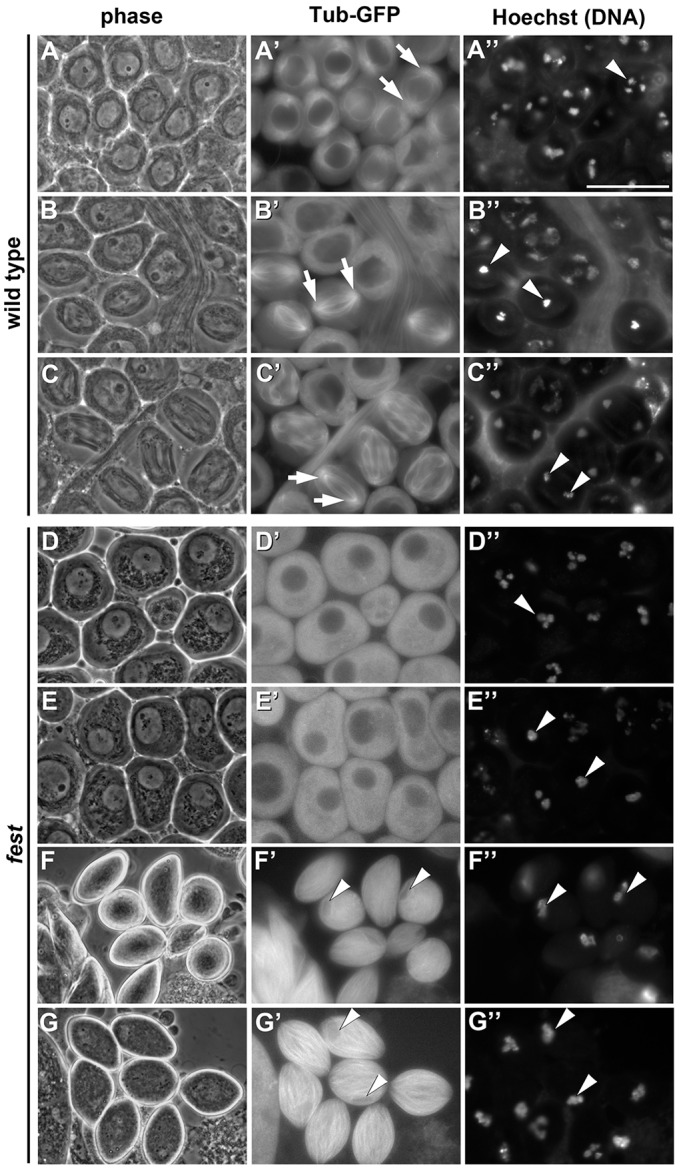Fig. 3.

Fest is required for proper entry into metaphase of meiosis I. (A-G″) Live squashes of wild-type (A-C″) and fest mutant (D-G″) testes, both expressing Tubulin-GFP. (A-G) Phase images. (A′-G′) Tub-GFP. Arrows in A′,B′,C′ indicate spindle poles. (A″-G″) Hoechst (DNA). Arrowheads indicate condensed chromosomes. (A-A″) Wild-type prometaphase of meiosis I. (B-B″) Wild-type metaphase I. (C-C″) Wild-type anaphase I. (D-D″) fest mutant spermatocytes showing condensed chromosomes (D″) but no evidence of microtubule asters (D′, compare with A′). (E-E″) A rare class of fest mutant spermatocytes with chromosomes condensed and congressed to the center of the cell (E″) but lacking a metaphase spindle (E′, compare with B′). (F-F″) fest spermatocytes with dense bundles of microtubules and nuclei in the process of getting squashed (arrowheads, F′). (G-G″) The terminal phenotype of fest mutant germ cells. Microtubules are dramatically dense and disorganized, compressing the still-arrested nucleus (arrowheads, G′). Scale bar: 50 µm in A″.
